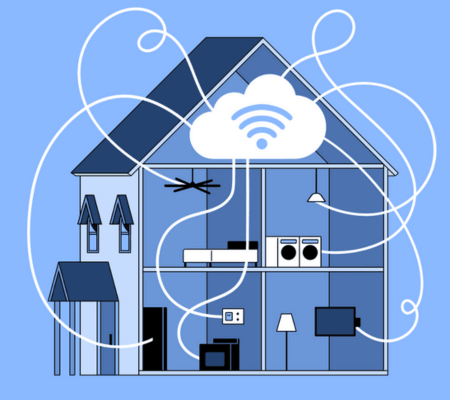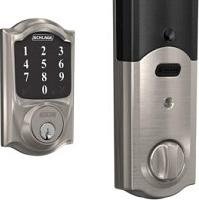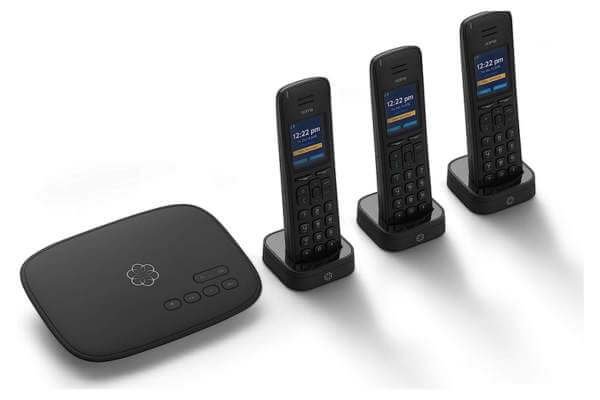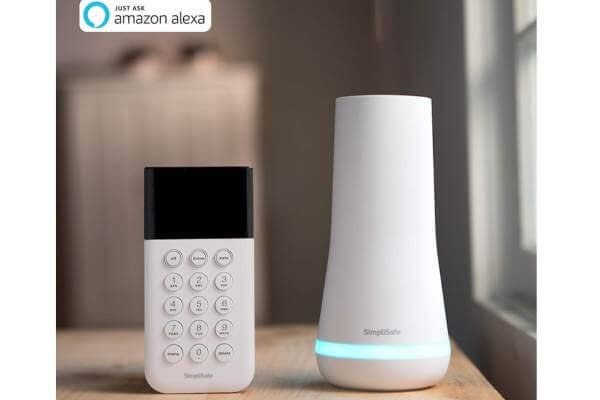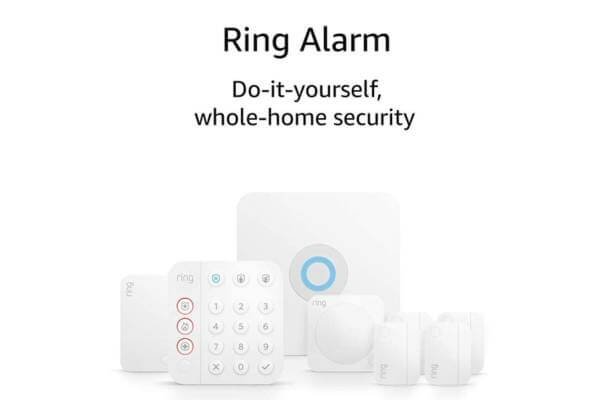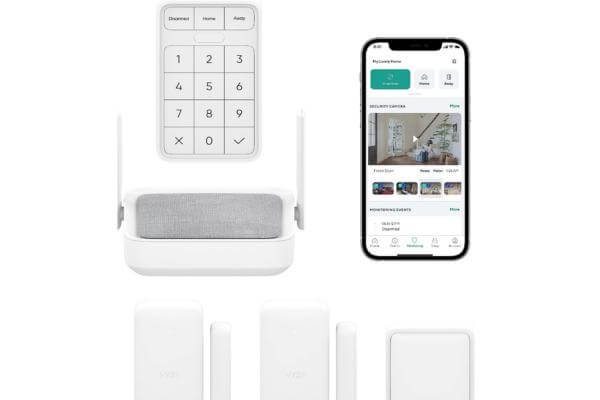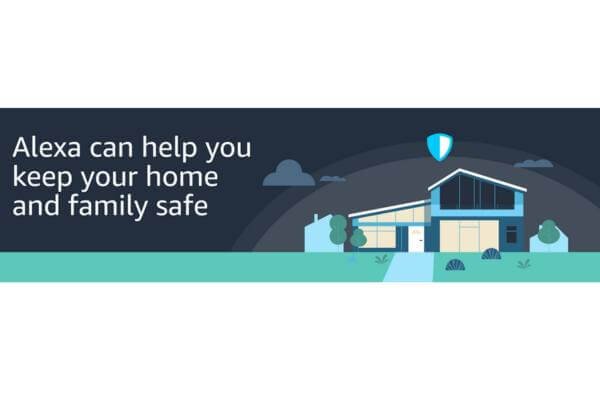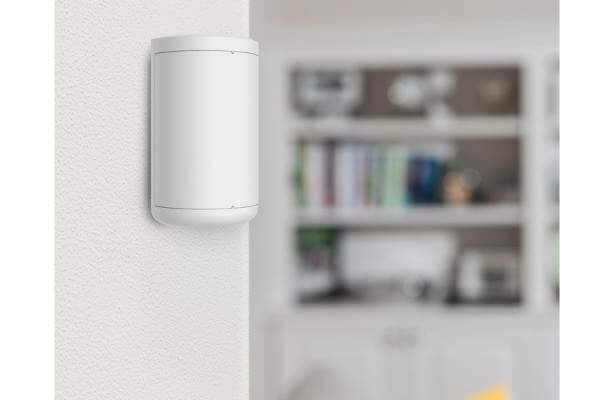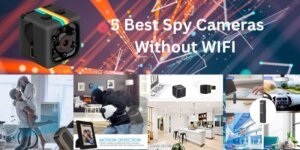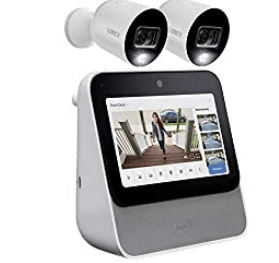DIY home security systems allow for remote monitoring of your house, while motion-activated alarms help deter burglars. Wireless security cameras allow you to monitor your home even when you are not there. Your home is protected with professional monitoring services that offer 24/7 monitoring and response to alarms.
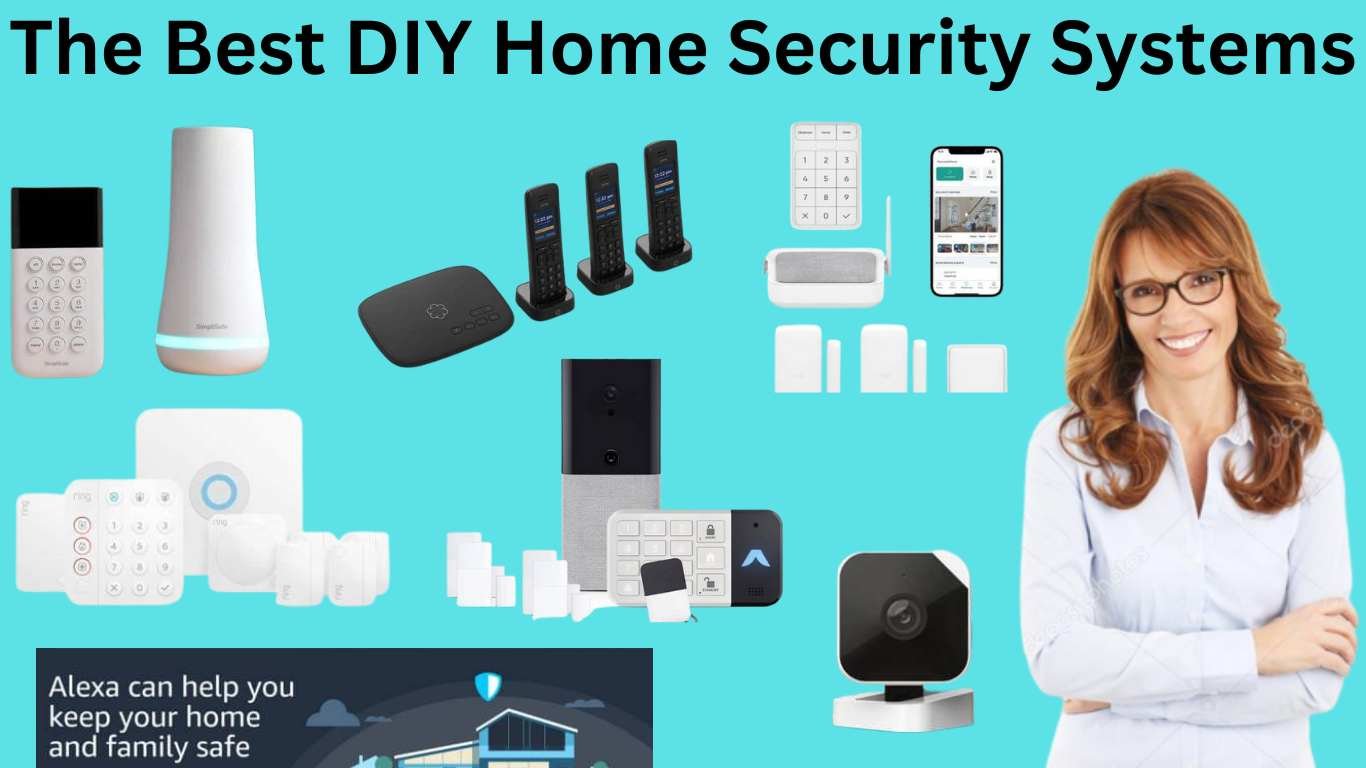
Table of Contents
ToggleAuthor Verdict
In conclusion, the Abode Essentials Starter Kit stands out as one of the best DIY home security systems available today.
In a world where home security is paramount, the Abode Essentials Starter Kit stands as a reliable and effective solution. It empowers homeowners to take control of their security, offering a sense of safety and comfort without the need for extensive professional installations or expensive monthly fees.
Investing in the Abode Essentials Starter Kit means investing in the safety and well-being of your home and loved ones. Embrace the convenience, flexibility, and peace of mind that this exceptional DIY home security system brings, and experience the confidence of knowing that your home is protected, no matter what.
Don’t wait any longer—take the step towards a safer home today with the Abode Essentials Starter Kit, and enjoy the benefits of a secure and connected living environment that truly makes a difference.
Types of Home Security Systems
There are several types of home security systems available, each with its unique features and benefits. The most common types include:
-
Wired vs. Wireless Security Systems:
- Wired systems are hardwired into your home’s electrical system, offering reliability but requiring professional installation.
- Wireless systems are easy to install yourself, making them a popular choice for DIY enthusiasts.
-
Motion Detectors:
- These sensors detect movement within your home and trigger alarms or notifications.
- Modern AI-powered motion detectors can distinguish between pets and intruders, reducing false alarms.
-
Base Station:
- The base station serves as the central hub of your security system, connecting all the components.
- It often includes a built-in siren and backup power source.
-
Smart Home Devices:
- Many DIY security systems integrate with smart home devices like lights, locks, and thermostats, allowing you to control them remotely.
-
Cellular Backup:
- Cellular backup ensures your security system stays connected even if your internet or power goes out.
-
Outdoor Security Cameras:
- Outdoor cameras provide real-time surveillance of your property and deter potential intruders.
- AI-powered cameras can identify and alert you to suspicious activity.
-
Video Doorbells:
- Video doorbells allow you to see and communicate with visitors from your smartphone.
- They often include motion detection and AI facial recognition.
Professional Monitoring Services & Installation Options
Professional Monitoring Services Explained
Professional monitoring services provide an extra layer of security for your DIY system. Here’s how they work:
- When an alarm is triggered, the monitoring center receives an alert.
- Trained professionals assess the situation and contact the appropriate authorities if necessary.
- This 24/7 service ensures a rapid response to emergencies.
False Alarms, Push Notifications & Monthly Fees
One common concern with security systems is false alarms. With AI-enhanced systems, false alarms are minimized as the technology can differentiate between genuine threats and harmless movements like pets or moving curtains.
Many DIY systems also offer push notifications, alerting you instantly to any suspicious activity, and allowing you to take action.
While some professional monitoring services require a monthly fee, the added peace of mind and quick response in emergencies make it a worthwhile investment for many homeowners.
Cloud Storage & Battery Backup
Most DIY systems offer cloud storage for your video footage, ensuring that your data is safe even if the physical equipment is damaged or stolen. AI algorithms can also help organize and retrieve specific clips from your stored data.
Battery backups are essential for keeping your security system active during power outages, ensuring uninterrupted protection.
Control Panel Options for DIY Set-up
DIY security systems come with user-friendly control panels, typically accessed through a mobile app. These apps allow you to:
- Arm and disarm your system remotely.
- Receive real-time alerts and notifications.
- View live camera feeds.
- Control connected smart devices.
With intuitive interfaces and AI integration, managing your security system has never been easier.
What are the best DIY home security systems?
We’ve tested a number of systems in order to come up with the best DIY home security system, and the Abode Essentials Starter Kit is one of the best options on the market.
It’s cost-effective, offers integrated smart home capabilities like smart bulbs and door locks, as well as everything else necessary for setting up a reliable security system, and it works with Apple’s “smart home” platform.
Read also: Blink Outdoor Wireless Weather Resistant HD Security Camera.
Top 9 The Best Diy Home Automation Security System
We discussed of the 9 best DIY home automation security systems here. These systems offer an easy and cost-effective way to increase your home security. Additionally, they offer a wide range of features that can be customized to meet the needs of the user.
1. Abode Essentials Starter Kit
It is the best DIY home security system that delivers flexibility, affordability, and a reliable safety net, creating a secure environment for you and your loved ones without compromise.
The Abode Essentials Starter Kit is the best DIY home security system and a versatile smart home controller with both Zigbee and Z-Wave integration — which means you can use it to control things like smart bulbs and locks.
It’s also straightforward to set up. The beginner’s bundle is a bit slim in its accessory offerings, but you can choose from a host of other packages and purchase additional sensors separately.
With Abode, you can live a better life by renting out an extra room or office for your business. We offer three tiers of service: Free, Standard ($6/month or $60/year), and Pro ($20/month or $200/year). The free plan does not let you record video from cameras or use automation within the system, but you can view live video, use smart home integrations, and get push notifications.
Reason to Buy
- Easy to install
- No-contract monitoring plans are available
- Works with lots of third-party devices
- Amazon Alexa voice control
- Zigbee and Z-Wave support
- Works with Apple HomeKit
- Mobile and web access
Reason to not Buy
- Can’t manage notifications from mobile app
- Doesn’t come with a control panel
- Bulky sensors
The Standard Plan gets you 7 days of rolling cloud storage for video and a timeline of events, such as when doors are opened.
he Pro plan gets you 30 days of cloud storage, as well as 24/7 professional monitoring, as well as cellular backup. If you have the Standard plan, you can also get three- and seven-day monitoring on an event-by-event basis for $8 and $15 each.
2. Ooma Smart Security Starter Pack
Specification
- Professional Monitoring / Monthly Price:–> $14.99
- Number of Sensors Included:–> 2
- Cellular Backup: –>No
- Battery Backup:–> No
- Smart Home Compatibility:—> IFTTT, Google Assistant Nest, Alexa
Reason to buy
- Affordable kit and accessories
- Remote access to emergency services
- No app is required for notifications
Ooma Smart Security Starter Pack is a bare-bones system, but it has the features you need and more. It comes with an integrated hub that can be used to control all of the sensors in your home, as well as voice and facial recognition for added peace of mind. Additionally, there are monthly low-cost VoIP service plans available so you never have to worry about data rates again!
If you want to get the most out of Ooma, our free tier includes push notifications and unlimited sensors. The only downside is that you can’t use them to call or text people, but this can be easily remedied by subscribing to a higher-level account.
Ooma also added professional monitoring for an extra $14.99 per month, which was a much-needed feature. Since its launch, Ooma has added both battery backup ($34.99) and cellular backup so your system will continue to function if the power and Internet go down. The Ooma Telo 4G costs $129, plus $11.98/month!
3. SimpliSafe Essentials (Best Professional Monitoring Home Security)
Specification
- Professional Monitoring / Monthly Price:–> $14.99-$49.99
- Number of Sensors Included:–> 4
- Cellular Backup:–>Yes
- Battery Backup:–> Yes
- Smart Home Compatibility:–> August, Google Assistant, Alexa
Reason to Buy
- The Keypad remote is familiar
- The alarm is very loud
- Easy to install
The SimpliSafe Essentials kit, as our runner-up pick for the best DIY smart security system, has the loudest siren we tested (93 decibels) and is also stylish. It also comes with more accessories than most of its competitors, including three entry sensors instead of the standard one or two. Additional accessories won’t break the bank, either.
Overall, this kit is a great option for those who want an easy-to-use DIY smart security system that can handle any home situation.
If you want a smart lock that integrates with both Alexa and Google Assistant, SimpliSafe is the perfect option. It has a professional monitoring service for $14.99 per month, which includes features like secret alerts. You can also cancel the plan at any time for an additional fee of $24.99/month!
4. Ring Alarm (An Affordable Professional Monitoring)
Specification
Reason to buy
- Affordable professional monitoring
- Easy to install
- Loud alarm
Ring’s alarm system is the perfect way to keep your home safe and secure. It includes a loud alarm, battery backup, and cellular coverage so you can be sure that even if something goes wrong with your phone or power source, you’ll have access to help as soon as possible.
Plus, Ring has compatible add-on devices like video doorbells, security cameras, and smart lights so you can arm and disarm your system by voice without ever having to leave your comfort zone.
Alarms are an essential part of any home, and the Ring Alarm Security Kit is designed to protect your property from vandalism or theft. This kit includes a keypad with one-touch buttons for Police, Fire, and Medical assistance, as well as a range extender. Plus, it costs just $199!
If you have the Ring Alarm Pro, then you can purchase a professional-grade monitoring service that includes Eero Wi-Fi 6 mesh router built into the main hub itself. The price for this service is $20/month, and it includes professional backup if your home has an Eero Wi-Fi 6 network.
5. Wyze Home Security (A Budget DIY Home Security System)
Specification
- Professional Monitoring/Monthly Price:–> $10 a month/$100 year
- Number of Sensors Included:–> 3
- Cellular Backup:–> No
- Battery Backup:–> Yes
- Smart Home Compatibility:–> None
Reason to buy
- Inexpensive professional monitoring
- Battery backup good
- Easy to install and use
The motion sensor is an essential part of any home security system, and the Wyze Home Security System comes with one. If your house experiences a sudden influx in motion – like if there’s someone moving around in your attic or basement – then the motion sensor will alert you straight away. It also has been designed to be easily adjustable to fit most homes, so you can get the perfect level of signal wherever it matters most.
Despite these limitations, the Wyze Home Security Camera is a very affordable and easy-to-use home security system that can provide you with excellent value for your money. It has many features that make it stand out from other similar systems on the market, making it an ideal choice for anyone who wants to keep their home safe and secure.
7. Abode iota Home Security Kit (Works with a lot of Smart Home Devices)
Specification
- Professional Monitoring/Monthly Price:–> $30/month, or $8-$15 for three- or seven-day monitoring
- Number of Sensors Included:–> 2
- Cellular Backup:–> Yes
- Battery Backup:–> Yes
- Smart Home Compatibility:–> Alexa, Google Assistant, HomeKit, Nest, IFTTT, Zigbee, Z-Wave
Reason to buy
- Works with Alexa, Google Home
- Can connect to other Z-Wave, Zigbee smart-home devices
- Fast, easy setup
If you have an Abode iota home security system, it comes with one main feature that’s not found on most systems: a built-in 1080p camera. This camera can be used to watch your home from anywhere in the world, and if there is motion detection going on in your house, the alarm will sound loud to let everyone know.
In addition to this great feature, Abode has added another innovative feature to its latest model—an a93-dB alarm that connects all of its other door and motion sensors so you never have to worry about anyone getting past your security system without being detected.
If you’re looking for an AI security system that works with Apple HomeKit, the iota is a good option. It’s a camera that can be connected to your home through HomeKit and get push notifications when things happen in your home. However, like standalone wireless security cameras, the Iota does not have as many features as some of the other options on this list.
The Standard Plan gets you rolling with 7-day cloud storage for videos and events, as well as professional monitoring. The Pro plan features 30 days of cloud storage, 24/7 cellular backup, three-and seven-day monitoring on an as-needed basis for $8 and $15 each.
8. Alexa Guard Plus (Best Alexa-based Home Security)
Specification
- Professional Monitoring / Monthly Price:–> Yes/$4.99
- Number of Sensors Included:–> n/a
- Cellular Backup:–> No
- Battery Backup:–> No
- Smart Home Compatibility:–> Alexa
Reason to buy
- Uses existing Amazon Echo devices
- Low monthly price
If you already have a bunch of Echo speakers, Alexa Guard Plus is an affordable way to get an ad-hoc home security system. It uses microphones in compatible Echo devices to listen for things like glass breaking, footsteps, or smoke and fire alarms and will send an alert to your smartphone. From there, you can contact a helpline that can connect you with emergency services.
Alexa Guard Plus is different from the other services on this list in a few ways. For one, it relies on Amazon Echo devices instead of professional monitors. This means you won’t have to worry about battery or cellular backup; Alexa will keep track of your device’s location and contact you if something goes wrong.
Additionally, with Ring Protect Plus service, you can connect your Echos with other smart home devices like thermostats and video doorbells! If all of your compatible home security cameras are working together (namely from Ring and Blink), they’ll start making barking dog sounds when there’s motion detected in the environment!
9. Honeywell Best Smart Home Security
Includes a camera with motion detection
Specification
- Professional Monitoring / Monthly Price:–> No
- Number of Sensors Included:–> 2
- Cellular Backup:–> No
- Battery Backup:–> Yes
- Smart Home Compatibility:–> Alexa, Google Assistant, IFTTT
Reason to buy
- Alexa built-in
- Built-in camera with motion detection
- Works as Z-Wave hub
The Security Hub is Honeywell’s latest product, designed to help protect your home from burglars and other potential threats. It has a built-in security camera and speaker, allowing you to use it as a smart speaker when not using it as a security device. The hub also includes Alexa, so you can use it with Google Assistant.
The camera in the Honeywell hub also has facial recognition, but we found this feature didn’t work as well as it should have. Moreover, the hub doesn’t have all of Alexa’s features. The base station does have a battery backup, but Honeywell doesn’t offer professional monitoring as an option, nor cellular backup.
 ———————————————————————————————————————-
———————————————————————————————————————-
How We Test DIY Home Security Systems
We tested out the DIY home security systems in the suburbs of the San Francisco Bay Area in a two-story townhouse over the course of three months. Each kit comes with a base station and a variety of sensors.
The security gateways were all configured on the first floor of the house near the main entrance, while motion sensors were placed facing the front door and were no higher than six feet off the ground. (This was done to test whether each sensor would pick up cat movement.) Additionally, we used a sliding glass door to test each entry sensor.
Most mobile apps work fine with the sirens from these brands, but we tested their relative loudness by setting off the alarms and leaving the house. We signed up for every professional monitoring service to check their responsiveness in case of a trigger.
Each gateway was also unplugged and used in battery mode to determine its abilities in case of a power outage. If the gateway required an Ethernet connection, it was hooked up to a Google Wi-Fi node that was closest to the front door.
How to Choose the Best DIY Home Security System for Your Home
When it comes to home security, there are a lot of factors you need to take into account. The type of home you live in, the size of your yard, and whether or not you have a backyard. However, one of the most important things to consider is the security system you choose.
If you don’t have time to go through all of the research and find the best option for your home, we’ve got you covered. In this blog post, we will tell you about the different types of security systems and how they can be used to protect your home.
Home Security Systems
There are a lot of different types of home security systems, and it can be hard to decide which one is right for you. Here are six tips to help you choose the best DIY home security system:
1. Decide what type of security you need. There are many different types of home security systems, so it’s important to make sure you have the right one for your needs.
2. Research the different options. Once you’ve decided on a type of security system, research the different options available to make sure you’re getting the best deal.
3. Compare prices. Sometimes it’s important to compare prices before making a purchase. You may not have time to research every option, and it can save you some money in the end.
4. Consider your budget. The cost of a security system will affect how much money you can spend on other areas of your business, such as marketing or growth strategies.
5. Consider your needs. When looking at different types of security systems, consider what type of protection you need and what kind of features would be beneficial for your home.
6. Make a decision! Once you’ve determined which type of security system is right for your home, make a decision on how much money to spend and how much space you want your system to take up in your yard.
Security in Your Backyard
One of the most common questions people ask is how to secure their backyard. There are a few different ways to secure your backyard, and the best way to do it will depend on the type of security system you choose.
Some systems require you to have a keycard or code to open the door. Other systems require you to install a camera and watch it 24/7. Still, others use sensors that detect movement or sound. The best way to decide which system is right for you is to talk to a professional installer.
How to Choose the Right Security System for Your Home
When it comes to home security, there are a lot of factors you need to take into account. The type of home you live in, the size of your yard, and whether or not you have a backyard. However, one of the most important things to consider is the security system you choose.
If you don’t have time to go through all of the research and find the best option for your home, we’ve got you covered. In this blog post, we will tell you about the different types of security systems and how they can be used to protect your home.
We’ll start with a brief overview of security systems:
1) Home security systems
These systems are designed to keep your home safe from intruders. They can be used for either public or private areas of your home.
2) Security cameras
A security camera can help you keep an eye on your house 24/7. It can also be useful if you want to monitor activity in your home while away from home.
3) Wireless home security systems
Wireless home security systems allow you to share a single camera system with family or friends so that they can see and/or hear what is happening in your house while you’re away. This system is great if you don’t have time to visit your house each day and want to keep an eye on it from anywhere in the world.
DIY Home Security Systems with Outdoor Cameras
When it comes to safeguarding your home, DIY home security systems with outdoor cameras offer an excellent solution. These systems empower you to take control of your home security and provide peace of mind without breaking the bank. With DIY options, you have the freedom to customize and set up your security system according to your specific needs.
What Are the Best Home Security Systems without Subscription?
For those seeking a home security system without the burden of monthly fees, there are several outstanding options available. These systems typically offer self-monitoring capabilities, enabling you to receive instant alerts directly to your smartphone whenever suspicious activity is detected.
Some of the top choices include Abode, SimpliSafe, and Ring Alarm, which allow you to enjoy professional-grade security without the ongoing subscription costs.
Best Wireless Security Camera Systems without Subscription
- 1. SimpliSafe – Best Equipment with No Monthly Fees: Your Affordable Home Security Solution
- 2. Abode – Best for Home Automation: Unbeatable Equipment with 60 cents per day Fees
- 3. Ring Alarm Security Kit – Best Security Camera and Alexa Compatibility
How do we guess Ring Security System is the best?
The Ring Security System has gained tremendous popularity in recent years and for good reason. Developed by the company that introduced the Ring Video Doorbell, this comprehensive system offers a range of features to protect your home.
The Ring Security System includes door and window sensors, motion detectors, and a central hub that connects all the components. With easy setup, cloud storage options, and compatibility with other Ring devices, it’s a top choice for many homeowners.
More –>Ring Alarm Security Kit – Best Security Camera and Alexa Compatibility
What is the Best Self-Monitored Home Security System?
Self-monitoring home security systems are an excellent option for those who prefer to oversee their own security without relying on a professional monitoring service.
One notable system in this category is the Abode Essentials Starter Kit. It includes a gateway, door/window sensors, a motion sensor, and a key fob for easy control. The Abode system integrates with popular smart home platforms, providing seamless automation and control options for added convenience.
What is the Best Home Security System with Cameras?
When it comes to home security, cameras play a crucial role in deterring potential intruders and providing valuable evidence in case of an incident.
The Arlo Pro 3 Floodlight Camera is considered one of the best home security systems with cameras.
It offers high-resolution video, advanced motion detection, two-way audio, and a weather-resistant design. With wireless installation and compatibility with smart home platforms, the Arlo Pro 3 Floodlight Camera delivers comprehensive security and peace of mind.
Read more: Arlo Pro 3 Floodlight Camera Review
The Truth about Home Security Systems
Home security systems have come a long way in recent years, and the truth is that they offer effective protection for your home and loved ones. Modern security systems provide a wide range of features, such as video surveillance, motion sensors, door/window sensors, and professional monitoring services.
These systems act as a deterrent to potential burglars and provide quick responses in case of emergencies. However, it’s important to remember that no security system is completely foolproof, and it’s crucial to take additional precautions such as securing windows and doors, maintaining good lighting, and being vigilant about potential threats.
DIY Security Camera System
If you’re looking to set up your own security camera system, a DIY approach can be cost-effective and flexible. With the advancements in technology, DIY security camera systems have become more accessible and user-friendly.
Options like Wyze Cam, Blink, and Reolink offer easy installation, wireless connectivity, and affordable pricing. DIY security camera systems allow you to monitor your property, deter intruders, and provide you with valuable footage in case of incidents.
Wireless Home Security Systems
Wireless home security systems have gained immense popularity due to their easy installation, flexibility, and convenience. These systems use wireless technology to connect sensors, cameras, and control panels, eliminating the need for extensive wiring.
SimpliSafe, Nest Secure, and Ring are among the top wireless home security system brands. With wireless systems, you can easily expand your security setup, control your system remotely, and enjoy seamless integration with your smart home devices.

